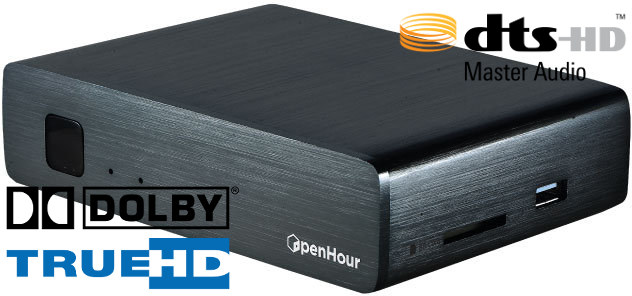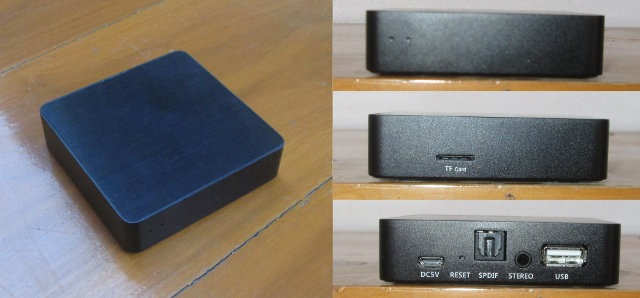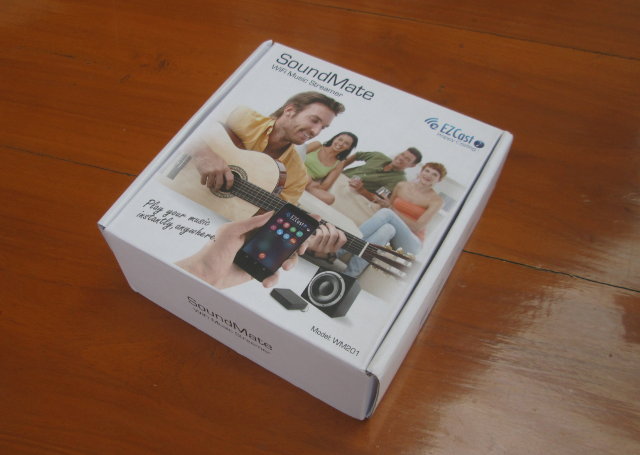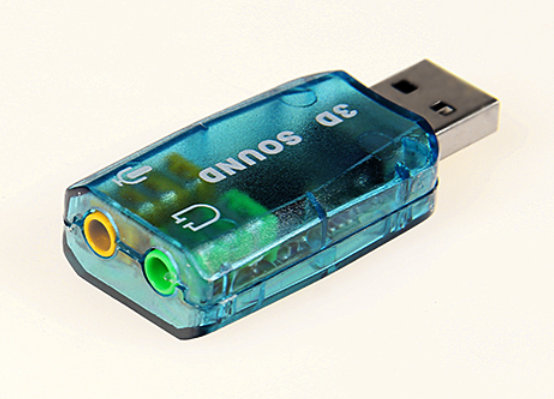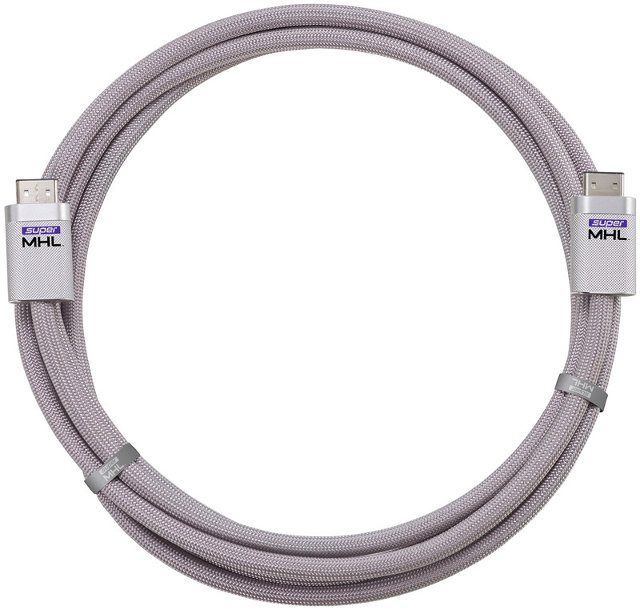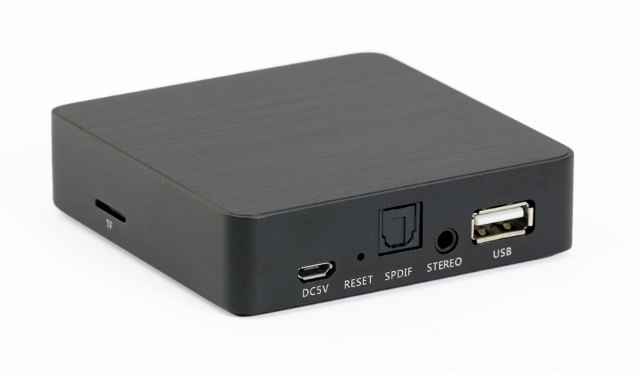People owning AV receivers capable of outputting 7.1 channels or more have had a hard time finding Android TV boxes that supports HD audio pass-through via HDMI. Many devices can pass through 5.1 codec like DTS or Dolby Digital (AC3 / E-AC3), but so far, none of the boxes I’ve tried could manage content with DTS-HD (MA / HR) and Dolby TrueHD with 8 channels properly. The one that came close was Zidoo X9 with support for Dolby TrueHD 5.1 and 7.1, but it downmixes 7.1 channels to 5.1 channels. So the only cost effective options to get proper 7.1 channel pass-through were Intel based mini PCs running Linux such as Asus Chromebox M004U or Intel NUCs. But recently, I’ve seen some progress. For example, yesterday Cloud Media released a new firmware for their Open Hour Chameleon media player based on Rockchip RK3288 processor. Their Android 4.4.2 firmware (version 1.0.23) […]
Giveaway Week – SoundMate WM201 Wireless Audio Streamer
All good things must come to an end, and this is the last day of Giveaway Week on CNX Software with Uyesee SoundMate WM201 wireless audio streamer that adds Wi-Fi connectivity to your speakers or old AV receiver, so that you can stream audio via EZMusic or a DLNA app in Android, iOS or, desktop computers. If you’ve ever used an EZCast dongle, the app looks just the same except it’s limited to audio streaming. I’ve tried it with an optical audio cable connected to the S/PDIF input of the device and Onkyo TX-NR636 AV receiver. It worked pretty well, as long as your device is in the same room, but if you move to another room, the connection become unreliable, and audio may cut from time to time. You can read SoundMate WM201 review for details. imply leave a comment below to enter the draw, with other rules as […]
SoundMate WM201 Wi-Fi Music Streamer (EZMusic) Review
Last year I reviewed SoundMate M2 Wi-Fi audio streamer, and Uyesee has sent me a sample of their new SoundMate WM201 powered by Actions Semi AM8253, and based on EZCast app for audio calld EZMusic (EZCast Music). SoundMate WM201 Unboxing Pictures That’s the package for the device. The device comes with two audio cables, a micro USB to USB cable for power, and “SoundMate WiFi Music Streamer” user manual. Let’s have a closer look at the tiny box. Two LEDs are located on the front for power and connection, a micro SD slot can be found on the side, and the rear panel has most of the connection: micro USB port for power, reset pinhole, optical SPDIF, 3.5mm stereo jack, and USB 2.0 host for mass storage. SoundMate WM210 Teardown Take out of four sticky rubber pad on the bottom of the case, and loosen four screws to remove the […]
Linux 3.19 Release – Main Changes, ARM and MIPS Architectures
Linus Torvalds released Linux Kernel 3.19 yesterday: So nothing all that exciting happened, and while I was tempted a couple of times to do an rc8, there really wasn’t any reason for it. Just as an example, Sasha Levin used KASan and found an interesting bug in paravirtualized spinlocks, but realistically it’s been around forever, and it’s not even clear that it can really ever trigger in practice. We’ll get it fixed, and mark it for stable, and tempting as it was, it wasn’t really a reason to delay 3.19. And the actual fixes that went in (see appended shortlog) were all fairly small, with the exception of some medium-sized infiniband changes that were all reverting code that just wasn’t ready. So it’s out there – go and get it. And as a result, the merge window for 3.20 is obviously also now open. Linus Linux 3.18 improved performance of […]
Onkyo TX-NR636 AV Receiver Setup and Audio Pass-through with OpenELEC / Kodi
Following up on my LG 42U820T 4K TV review, I’ll know checkout the second item purchased for my reviews thanks to the help of my readers, with Onkyo TX-NR636 7.2 channel AV receiver combined with Pioneer S-11 speaker set. As this is my first AV receiver, I still have a lot to learn, I can’t really comment on audio quality (except it sounds much better than my TV speakers, and is more powerful), so I won’t do a full review, but I’ll show some details about the receiver, explain how to it setup with speakers, show how to setup OpenELEC / Kodi for HDMI audio pass-through, and test it with various Dolby and DTS video files. Onkyo TX-NR636 Specifications But before all that, I’ll list some of the specifications of this cool AV receiver. Amplified Rated Output Power: 95 watts minimum continuous power per channel, 8 ohm loads, 2 channels driven […]
Connect Speakers to Any mini PCs with a $1 USB Sound Card
Last year, I made a poll to find out what kind of audio output people used with mini PCs, and one person commented “USB audio to av receiver”, but at the time I did not investigate. Recently somebody asked me for mini PCs with audio output for stereo speakers, and I recommended something like MINIX NEO X6 with a dedicated 3.5mm audio jack, but I’ve just discovered USB sound cards with stereo output and microphone input are incredibly cheap, even less than $1 shipped on Aliexpress, and just above $1 on Ebay. The features for the model above are listed as follows: Real USB Plug & Play Drive 2-channelsspeakers directly Support 3D positional sound and virtual 5.1 channels sound track Powered via USB port Digital Class-B power Amplifier inside Speaker Shifter – 5.1x earphone, 2 speaker virtual theater Software Value-added for Music: 27x Environmont Effects, 3x Environment sizes, 10-Band/Pre-set Equalizer […]
superMHL Standard Support 8K Video Output, 48-bit Color Depth, Dolby Atmos, and More
As we all just so happen to play with our 4K television… NOT, the MHL Consortium is already preparing for the future with a new superMHL specifications supporting 8K video up to 120 fps, the ability to charge more powerful devices, new audio format support and more. Key features of superMHL specifications: Delivery of up to 8K 120fps video (4320p @ 120 Hz) Deep Color support up to 48-bit color depths Wider color gamut to view content the way filmmakers intended High-Dynamic Range (HDR) support to strike the perfect balance of bright spectral highlights along with shadow details Immersive surround sound with support for object audio such as Dolby Atmos, DTS-UHD, 3D audio, and an audio-only mode Advanced connectivity configurations to link multiple MHL devices together (TV, AVR, Blu-ray player) and control them via one remote Power charging up to 40W Content on multiple displays when connecting a single device […]
UyeSee SoundMate WM201 Wi-Fi Music Streamer Features Actions Semi AM8253 SoC
EZCast dongles are wireless display dongle supporting Miracast, DLNA, Airplay, and EZCast protocol, and are all based on Actions Semiconductor AM8251 MIPS processor. The company has now designed AM8253 SoC specially for audio applications using these standards, and found in upcoming products such as UyeSee WM201 Wi-Fi music streamer. UyeSee WM201 specifications and features: SoC – Actions Semi AM8253 32-bit RISC processor @ 600 MHz with built-in 24-bit 96 KHz DAC System Memory – 64 MB DDR3 Storage – 128MB for firmware, and micro SD card for audio files Connectivity – 802.11 b/g/n Wi-Fi (150 Max). WPA, WPA2, and WPA2 Mixed security Audio Ports – 3.5mm audio jack, optical S/PDIF Wireless Audio Standard – Airplay, DLNA, Qplay and Ezcast Audio Format – MP3, AAC, WAV, FLAC, APE, OGG, WMA, DTS, AC3 (Dolby Digital), ra, AIF, AIFF, M4A(ALAC), MKA, MIDI,, TTA USB – 1x USB host port, 1x micro USB port […]


